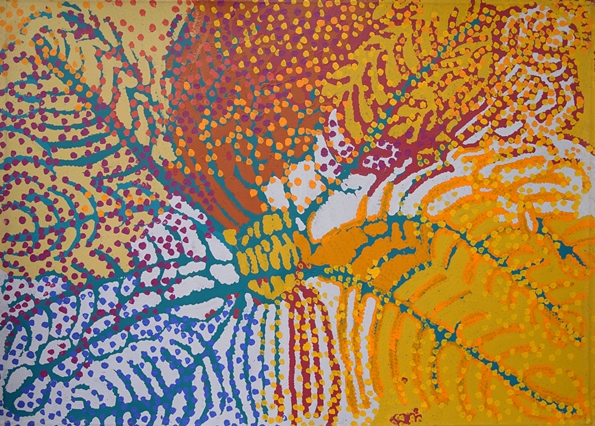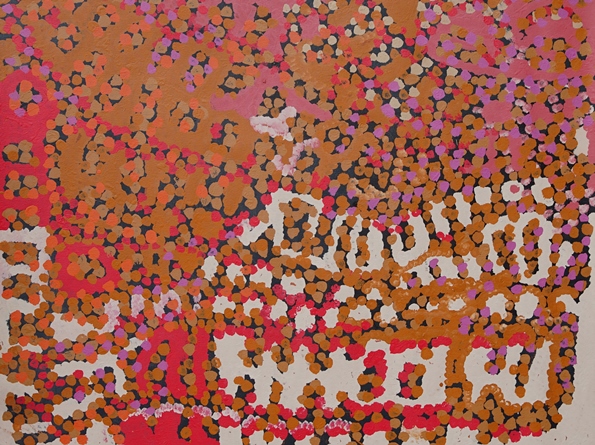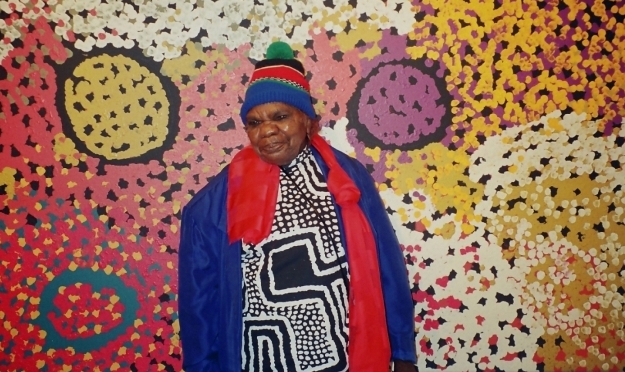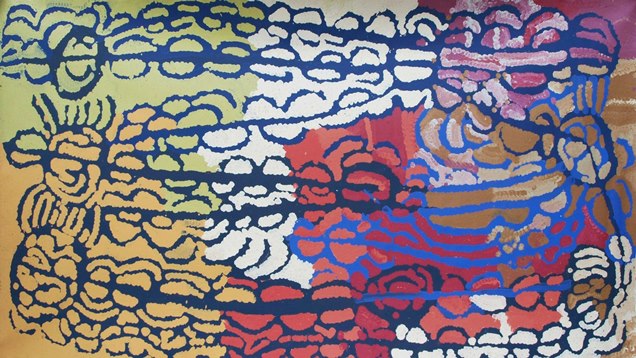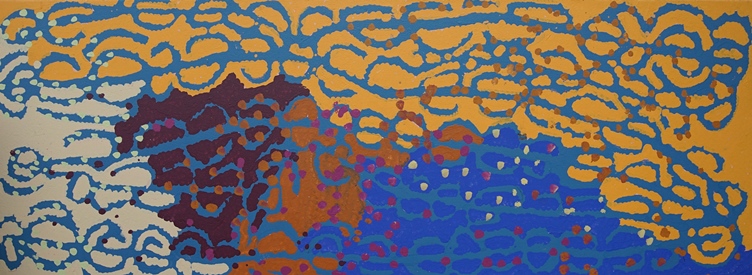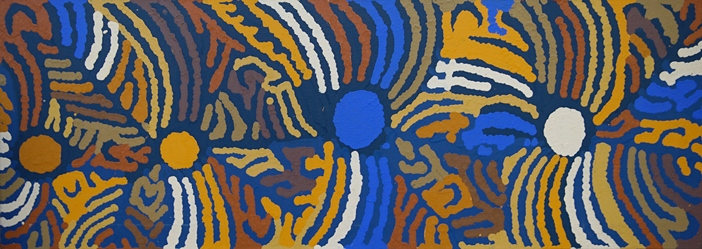The Yam Dreaming of Lorna Napurrula Fencer
Yam Dreaming, a 2017 exhibition at Japingka Aboriginal Art Gallery, includes a collection of extraordinary paintings by Lorna Napurrula Fencer. Lorna is a custodian of the Yam Dreaming stories from Yumurrpa, a site in Warlpiri country, to the north of Yuendumu community in Australia’s Northern Territory.
Lorna Fencer (1924-2006) was a famous Lajamanu painter, from a group of Warlpiri people who were forcibly removed from the Yuendumu settlement in the 1950s in order to relieve the growing population pressures in a very small desert community.
Lorna inherited through her family line these very big Warlpiri stories, and in the Yumurrpa site the Ancestors drew out the primal yam from the underground water source. Lorna paints a network or a system that shows the yams, shows the roots and the leaves. She uses very rich colour and she uses the occasional dots around the structure representing the flowers and the seeds of the yam.
In Lorna’s culture, the story about the Big Yam and the Small Yam, the Yarla and the Wapirti, is consciously written into a significant ancestral story that talks about the importance of sustainability and harmony.
In the Ancestor story, two brothers owned the different ancestral rights for the Big Yam and the Small Yam. As they moved from their different Creation sites towards each other, a huge battle erupted between their followers, so there was a great deal of death and destruction. The story is played out by Warlpiri people and it sits in their culture as a reminder of the importance of the yam resource to Aboriginal people. It remains a resource that needs to be equitably managed and shared in order to maintain social cohesion.
These stories are embedded in ceremony and song. Lorna Fencer is one of the most significant painters of the Yam Dreaming and significant custodial elder for this story as well as a magnificent painter. She clearly worked out the different aspects of Yam Dreaming in her art.
There is a very large two-metre painting, colourful painting, that is the Big Yam, the Yarla Jukurrpa, or the Big Yam Dreaming site, and that is the story that comes from Yumurrpa.
On the other side of the gallery is another canvas, perhaps not significantly different in structure, but this is the Wapirti, or Small Yam. This is the other side of the Yam Dreaming story and the other aspect of ceremonial practice that people continue to carry out, reinforcing this story of the importance of the yam and the importance of its proper use in Warlpiri culture.
Lorna also pulled apart aspects of the Yam story, as did the great Emily Kngwarreye, and she tended to use colour in a more abstracted way, so she was a colourist in a pure artistic sense.
Lorna would choose the colours that gave her paintings the most impact. There s a season when the plant is young and all the greens and blues are predominating, and then later on as the vine starts to dry out and the land cracks under the force of the growing Yam tubers, so people would then follow the cracks to see where the big yams were growing. Lorna’s use of colour is dramatic and distinctive.
The entire exhibition of ten artists painting the Yam Dreaming stories is full of colour. It’s a fantastic winter exhibition, it is just an absolute burst of colour from desert artists, and two of the greats are here, Lorna Fencer Napurrula and Emily Kngwarreye.
Interestingly, also in the exhibition we have Lorna’s daughter, Judy Martin Napangardi. She paints several aspects of Yam Dreaming stories that relate to the same ancestral story as her mother. It was a dominant story that belonged to Lorna Napurrula, and Judy tends to make more contained and structured paintings, not quite as random and chaotic as some of the great Lorna Fencer paintings are. There is a generational passing down of the story from mother to daughter.
Read more:

